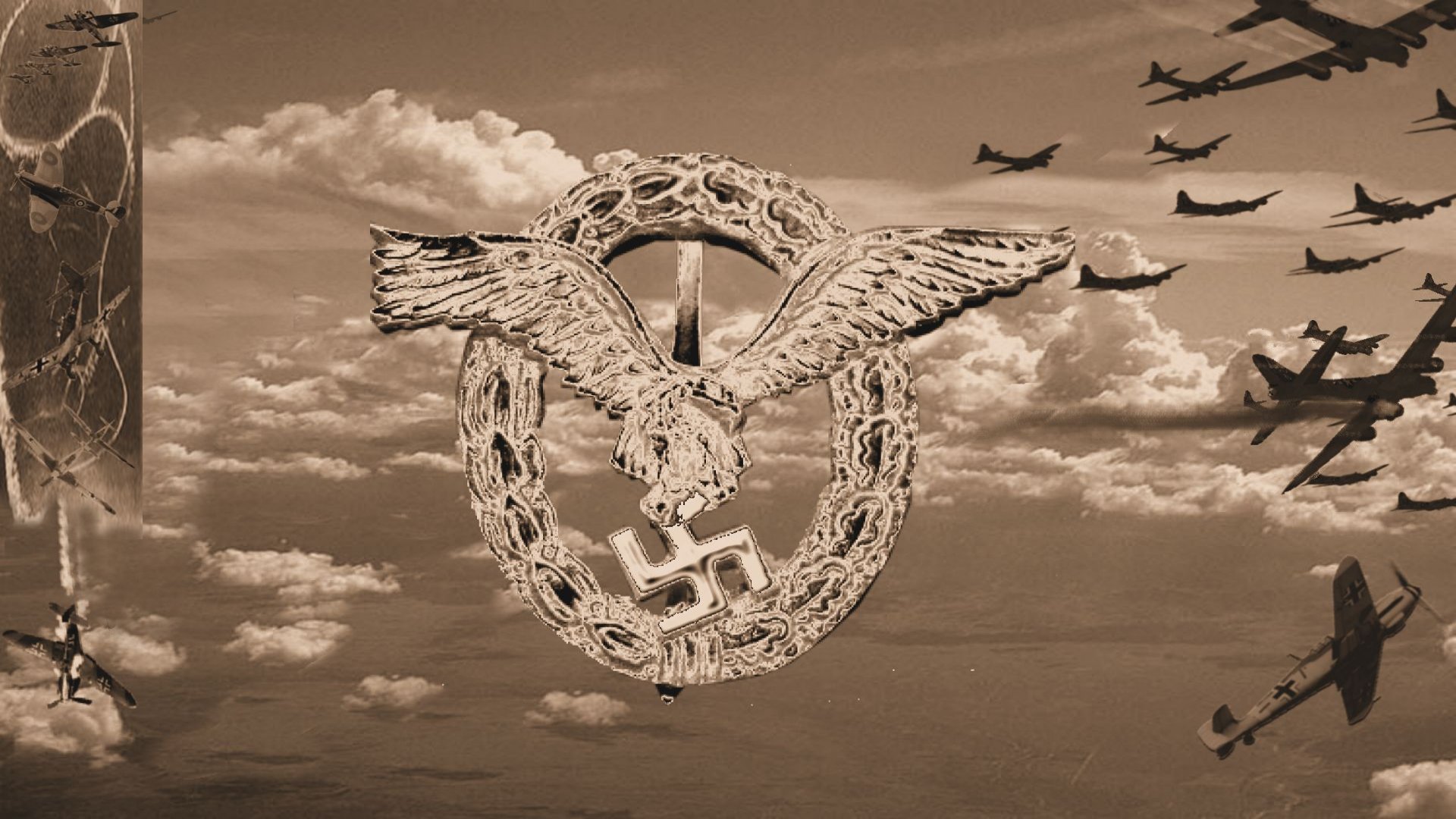The Messerschmitt Me 410 'Hornisse'(Eng:Hornet) was a German heavy fighter and Schnellbomber used by the Luftwaffe during World War II. It was developed from the failed Bf 110 replacement, the Me 210. It was operationally used as a night intruder over England and a bomber destroyer, fighting the daylight raids by the Allies.
Development
The Bf 110's shortcomings had been felt and addressed by Wily Messerschmitt quite early, and already in 1937, design work on its successor, the Me 210, started. It was to be a better fighter than the Bf 110 in all respects, with concentration on performance and firepower. Aerodynamics were improved with a very sleek nose and greenhouse section, with heavy offensive armament and revolutionary remote-controlled rearward armament, comprising of a turret-mounted 13 mm machine gun on each side, sighted through an intricate periscopic system with provisions against accidentally firing into the rudder or elevators and a bomb bay was installed capable of holding a payload of 1,000 kg. Under tremendous pressure from the Reichsluftfahrtministerium (Imperial Air ministry), Messerschmitt worked reworked the Me 210 project, but when the RLM ordered the first batch of 1,000 Me 210's in 1940, work was far from completion and the plane's flying characteristics still insufficient. The newly formed Me 210 units suffered numerous accidents from poor flight characteristics and in 1942, the Me 210's production had to be halted. Production was later resumed for a brief period, but the final total completed in Germany was only three hundred and fifty-two, plus two hundred and sixty-seven built under licence in Hungary with DB 605B engines.
Back to Top
After being completely unsatisfied with the performance of the Me 210, Messerschmitt decided to redesign the aircraft and allocate it a new number, the Me 410. The prototype Me 410 was a converted Me 210A-0 and a number of other Me 210A-0s were brought up to the Me 410 standard but with Db 601F engines. The improvement in the performance of the aircraft and its handling made the Me 410 far more acceptable to the Luftwaffe, which received the first five Me 410A-1 light bombers in January 1943. It was armed with two 20mm MG151/20 cannon, two MG17 machineguns and two MG131, mounted one on each side of the fuselage in an electrically-powered barbette and could carry 4,409lbs (2,000kg) of bombs internally. The major change between the Me 210 and 410 was the introduction of the larger and more powerful Daimler-Benz DB 603A engines, with increased power compared to the DB 605s used on the Me 210C. The engine performance increased the Me 410's maximum speed to 625 km/h (388 mph), greatly improved rate of climb, service ceiling, and most notably the cruise speed, which jumped to 579 km/h (360 mph). The Me 410 outer wing panels had their planform geometry revised to bring the aerodynamic center further forwards in comparison to the Me 210, thus making the leading edge sweepback of the outer panels identical to the inner wing panels with both having identical 5.5° sweepback angles, which improved handling. It was also fitted with a combined gun sight comprising a four-power telescope with collimator. This made it possible to deliver precision fire from a range of 1000 meters and more, where the 50mm high-explosive fragmentation ammunition could destroy the four engined bombers employed by the Allies while still out of defensive firing range of the bombers.
Back to Top
In Action
The first unit to operate over the UK was V./KG 2, which operated over England in a night intruder role. However, the first Me 410 brought down over England happened on the nigh of the 13th of July 1943, when one was brought down by a Mosquito from No.85 Squadron. The main role of the Me 410 however, was use as a bomber destroyer against the daylight bomber formations of the USAAF. The Me 410 A-1/U2 was fitted with two additional 20 mm MG 151/20 cannons in the under-nose weapons bay, while the A-1/U4 was equipped with a Bordkanone series 50 mm (2 in) BK 5 cannon instead. For breaking up the bomber formations, many Me 410s also had four underwing tubes firing converted 21 cm (8 in) Werfer-Granate 21 mortar rockets. Two Geschwader, Zerstörergeschwader 26 and 76, were thus equipped with the Me 410 by late 1943. The Me 410 had by 1944 fully established a good reputation in the Luftwaffe, and because of the wide publicity given to II/ZG 26 as the 'Hornissengeschwader', it became unofficially known as the Hornisse (Hornet). However, this was not to last long. In 1944 the 8th Air Force had both P-47's and the new P-51's which could provide escort all the way to Berlin. By mid-1944 almost all surviving Me 410s were engaged in the defense of the Reich against day bombers. With their speed and firepower they brought down many bombers, but overall, while the Me 410 was good operating against unescorted bomber formations, it was not able to combat the Allied escorts. From mid-1944, despite being the only effective Lufwaffe bomber destroyer, the Me 410 units were taken from Defence of the Reich duties and production was phased out in favour of heavily armed single-engine fighters as dedicated bomber destroyers, with the Me 410s remaining in service flying on reconnaissance duties only.
Back to Top
Hungarian Air Force
The Hungarians built the Me 410C in the Danube Aircraft Factory and used it successfully on the Eastern Front. It had the leading edge slots and lengthened fuselage modifications plus 1,475 hp DB605B engines built under license. Production started in 1943 with the Luftwaffe receiving two-thirds and Royal Hungarian Air Force one-third of the aircraft built. A total of 267 Me 410's had been constructed before production ended in March 1944.
Deliveries of the Me 410 began in January 1943, two years late and continued until September 1944, by which point a total of 1,160 of all versions had been produced by Messerschmitt Augsburg and Dornier München.



